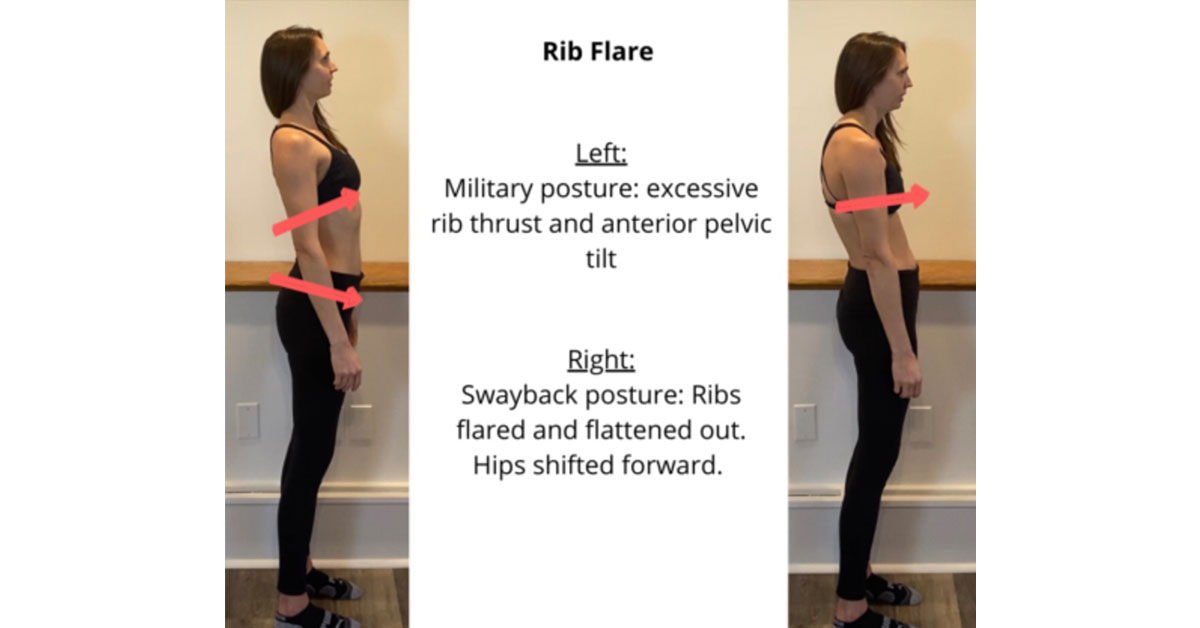Rib flare, medically referred to as “costal flaring,” occurs when the lower ribs protrude outward, making them appear flared. This condition often indicates underlying issues with posture or muscle imbalances and can cause pain, discomfort, and breathing difficulties. Addressing rib flare promptly is essential to prevent further health complications and improve overall well-being.

Image: www.coreexercisesolutions.com
Understanding Rib Flare
Rib flare results from excessive outward movement of the lower ribs, pushing against the abdominal contents. This can put strain on the respiratory muscles, making it harder to breathe. The exact cause of rib flare varies, but common contributing factors include:
- Poor posture: Slouching can lead to constant activation of the lower rib muscles, resulting in rib flare.
- Muscle imbalances: Weakness or tightness in the intercostal muscles (between the ribs) or abdominal muscles can disrupt rib movement.
- Hyperventilation: Rapid or deep breathing, such as during panic attacks, can cause the ribs to flare.
- Respiratory issues: Certain conditions like asthma or emphysema can lead to increased thoracic pressure, contributing to rib flare.
Symptoms of Rib Flare
Rib flare manifests through distinct symptoms, such as:
- Protruding lower ribs that create a flared appearance
- Chest tightness and discomfort
- Pain when inhaling deeply or coughing
- Difficulty breathing and shortness of breath
- Aching in the shoulder or back
Fixing Rib Flare: A Multipronged Approach
Addressing rib flare requires a comprehensive approach that focuses on improving posture, strengthening muscles, and correcting any underlying medical issues. Here are effective strategies:

Image: ownvlog.com
1. Posture Correction
- Practice proper posture: Stand tall with your shoulders back, chest lifted, and ears aligned over your shoulders.
- Strengthen back muscles: Exercises like back extensions and shoulder retractions strengthen muscles that support good posture.
- Stretch chest muscles: Tight pectoral muscles can contribute to rib flare. Regular stretching of the chest muscles can improve flexibility.
2. Muscle Strengthening
- Build intercostal muscle strength: Exercises like the “dive bomber” (lying on your stomach and lifting your chest) strengthen intercostal muscles.
- Engage abdominal muscles: Abdominal exercises like planks and crunches help stabilize your core and support the lower ribs.
- Use weights wisely: Avoid heavy lifting or exercises that strain the back or chest, as improper form can worsen rib flare.
3. Addressing Underlying Conditions
- Manage respiratory issues: If underlying respiratory conditions are contributing to rib flare, seek medical treatment to control them effectively.
- Address hyperventilation: Practicing calming techniques like deep breathing exercises can help reduce hyperventilation.
- Check for muscle imbalances: A physical therapist can evaluate muscle imbalances and recommend targeted exercises to correct them.
Benefits of Fixing Rib Flare
Addressing rib flare offers numerous benefits, including:
- Reduced pain and discomfort
- Improved breathing and lung function
- Enhanced posture and body alignment
- Better overall physical well-being
- Increased energy levels and vitality
How To Fix A Rib Flare
Conclusion
Rib flare can be an uncomfortable condition, but it’s manageable with a multifaceted approach that addresses posture, strengthens muscles, and treats underlying medical issues. By following the strategies outlined in this guide, individuals can effectively fix rib flare, improve their overall health, and enhance their quality of life. If the problem persists or worsens, it’s essential to seek professional medical advice for proper diagnosis and further treatment.